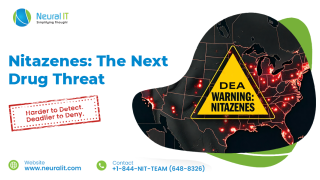Navajo County Adopts Ground Rules To Spend Opioid Settlement
Navajo County Adopts Ground Rules To Spend Opioid Settlement

Introduction
Pharmacies and drug firms have agreed to pay state and local governments billions of dollars in order to lower the alarming number of drug overdose deaths that have been brought on by the careless marketing of opioid painkillers for the past ten years.
However, it could end up being a waste of money or at least spread money around without doing anything to address the record-breaking rise in drug overdoses brought on by synthetic opioids like fentanyl, which are being incorporated into a variety of other narcotics to entice new generations of users to a lethal high.
That is exactly what occurred when the tobacco industry paid billions to the state, federal, and municipal governments, the majority of which disappeared into government budgets with little to no impact on smoking rates in the US.
In light of this, the Board of Supervisors approved a broad plan that might send a significant portion of the unexpected funds to regional community organizations actively engaged in drug addiction, overdose prevention, and education.
In 2020–21, opioid overdoses caused 406 Apache County people and 913 Navajo County inhabitants to end up in the hospital. That cost around $66 million, much above what the settlement will cover in a single year. Drug use is more prevalent than the state norm in Navajo and Apache counties, while mortality rates are about average. That's largely due to the fact that when it comes to providing Naloxone, which may swiftly reverse the symptoms of an opioid overdose, police and paramedics are performing far better than most of the rest of the state.
The county is negotiating with the local communities to combine the funding they get to have the greatest impact. Although the pharma corporations and the tribes are currently working on financial details, the tribes will mostly run their own programs.
More than half of the area and people of Navajo and Apache counties are located on reservations, respectively. The rates of drug addiction and death have usually been higher among the tribes. On the board of supervisors, three of the five seats are held by people from tribal communities. Numerous county programs, nevertheless, don't run on tribal territories.
According to the settlement agreement, the counties and municipalities must invest the majority of the funds in initiatives that directly combat the opioid overdose problem. During the pandemic, there were 30% more overdose fatalities, with fentanyl being the primary cause of most of them. The settlement's clauses were designed to prevent the failure of the tobacco settlements, wherein, according to a federal Centres for Disease Control estimate, less than 14% of the $256 billion settlement was allocated to decreasing smoking.
Another illustration is the use of government pandemic funds worth millions of dollars. The majority of the funding Navajo County received was used to fund county operations and initiatives. Early on, the funds were used to fund a surge of clinics and vaccine campaigns, but such efforts subsided after a few months. It hasn't altered in months, but less than 60% of the county's non-reservation population is immunized. However, several studies show that vaccines, which are free and widely available, have saved more lives than any other measure.




